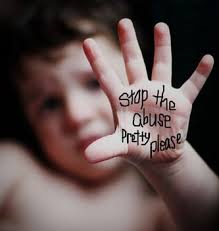Child Sexual Abuse and Girls — A First Response
Female victims of Child Sexual Abuse
Perpetrators of child sexual abuse take advantage of one of the most vulnerable populations—girls. 70 percent of reported sexual assault are children under the age of 17 with the vast majority girls. Child sexual abuse contributes to and grooms girls for oppression throughout their lives, including high rates of re-victimization.1 Sexual offenders often have hostile views toward women and girls, which can lead to more violent abuse and multi-genera tional abuse. Girls are most often abused by someone they know and trust, which can lead girls to internalize sexual abuse as their fault. This internalization can be full of shame and self-blame, creating even more self-destructive behavior, dissociation, and long-term mental health and physical health impacts.
tional abuse. Girls are most often abused by someone they know and trust, which can lead girls to internalize sexual abuse as their fault. This internalization can be full of shame and self-blame, creating even more self-destructive behavior, dissociation, and long-term mental health and physical health impacts.
Due to the internalization of sexual abuse, child sexual abuse leaves mainly emotional (instead of physical) scars. Some of the emotional scars are linked to the fact that young girls who are sexually abused are more likely to develop eating disorders as adolescents, to develop psychiatric disorders or alcohol and drug abuse, and to become pregnant before the age of eighteen.2 Even though there is some research and medical knowledge on the effects of child sexual abuse, the very private nature of the violation and misplaced shame it creates means that the total impact on victims remains misunderstood.
Preventing the earliest sexualized abuse and holding abusers accountable can be a powerful step toward equality, health, and justice for future generations. We have the ability to prevent child sexual abuse. The tools in our box include implementing prevention practices community-wide and providing law enforcement with the necessary training and coordinated resources dedicated to child sexual abuse prevention.
What can a first responder do to help prevent sexual abuse of girls? First responders can play a critical role by identifying and helping to address the epidemic of child sexual abuse so that we can protect our communities as a whole and enable women survivors to heal and thrive as adults. The most critical step a first responder can take is to believe the victim. Child sexual abuse is extremely complex, and the child should not feel that her fear, experience, and abuse are dismissed. By understanding the dynamics of child sexual abuse and its impact on girls, first responders can be the most effective. Victims of abuse are often living an experience of being invisible and not believed. Girls may have trouble associating with and remembering incidents of their abuse or trusting officials because they have been living in a world where their abuse is part of a larger picture of gender oppression, inequality, and violence against them, which should be taken into consideration by first responders.
First responders can play a critical role by identifying and helping to address the epidemic of child sexual abuse so that we can protect our communities as a whole and enable women survivors to heal and thrive as adults. The most critical step a first responder can take is to believe the victim. Child sexual abuse is extremely complex, and the child should not feel that her fear, experience, and abuse are dismissed. By understanding the dynamics of child sexual abuse and its impact on girls, first responders can be the most effective. Victims of abuse are often living an experience of being invisible and not believed. Girls may have trouble associating with and remembering incidents of their abuse or trusting officials because they have been living in a world where their abuse is part of a larger picture of gender oppression, inequality, and violence against them, which should be taken into consideration by first responders.
Working in partnership with sexual assault response teams is also an effective tool that first responders can use. By working in partnership with local sexual assault and child abuse advocates and medical professionals, law enforcement is able to link victims to competent care and reduce the chances of re-traumatizing. Sexual assault response teams are local multi-disciplinary teams made up of medical professionals, child protective services, forensic interviewers, and law enforcement that respond to a report of sexual abuse in a coordinated manner. Ideally, the team includes victims’ services or sexual assault advocates whose main focus is on advocating for the victim by connecting her and her non-offending parents or guardians to services. This team approach reduces the number of times an incident has to be re-told, simplifies the processes for victims, and provides support and advocacy services in the immediate crisis.
As part of the sexual assault response teams, there are also team members who spearhead a criminal investigation or determine child placement with coordinated responses to keep a child victim’s care and needs central to any criminal investigation. This team approach also provides a space for cross-training and collaboration, leading to better communication between agencies and efficient provision of services, support for non-offending parents, and long-term healing and recovery.
Los Angeles City provides a leading example of this relationship building and cross-training through both formal and informal partnerships where sexual assault response teams connect victims and their non-offending parents/caregivers to vital services and investigate different forms of child sexual abuse within the family/home, child exploitation, and out of home child abuse.
Conclusion
For girls who have experienced sexual assault, having a well-trained compassionate advocate can provide the needed support to successfully navigate complex criminal and medical systems with a goal of preventing re-victimization and mitigating other risk behavior over her lifetime. It is in all our communities’ best interests to better coordinate systems with sexual assault victims’ services both to respond fully to the needs of girls and to reduce the risks for girls who have been abused.
The Ms. Foundation for Women and Peace Over Violence are showing that prevention is possible and that advocates for women’s rights and law enforcement officials together can play a powerful role in ending child sexual abuse.
Emily Austin, Director of Policy and Evaluation
Peace Over Violence
Julie F. Kay, Senior Strategist
Ms. Foundation for Women
In partnership with Melissa Bradley, COPS Office
References
1 MH Gagné, F. Lavoie, and M. Hébert, “Victimization during childhood and revictimization in dating relationships in adolescent girls.” Child Abuse Negl 29. no.10 (October 2005):1155–72.2 American College of Obstectricians and Gynecologists, “Adult manifestations of childhood sexual abuse,” Committee Opinion 118, no. 498 (2011): 392–5. See https://www.rainn.org/get-information/statistics/sexual-assault-victims; http://www.everydayhealth.com/sexual-health/childhood-sexual-abuse.aspx.
A Different Response to IPV | Using GPS Technology to Address Theft | Spreading a Cure for Crime | Child Sexual Abuse and Girls | New Film to Help LE and Communities | Reentry Round-Up Conference Registration Now Open
